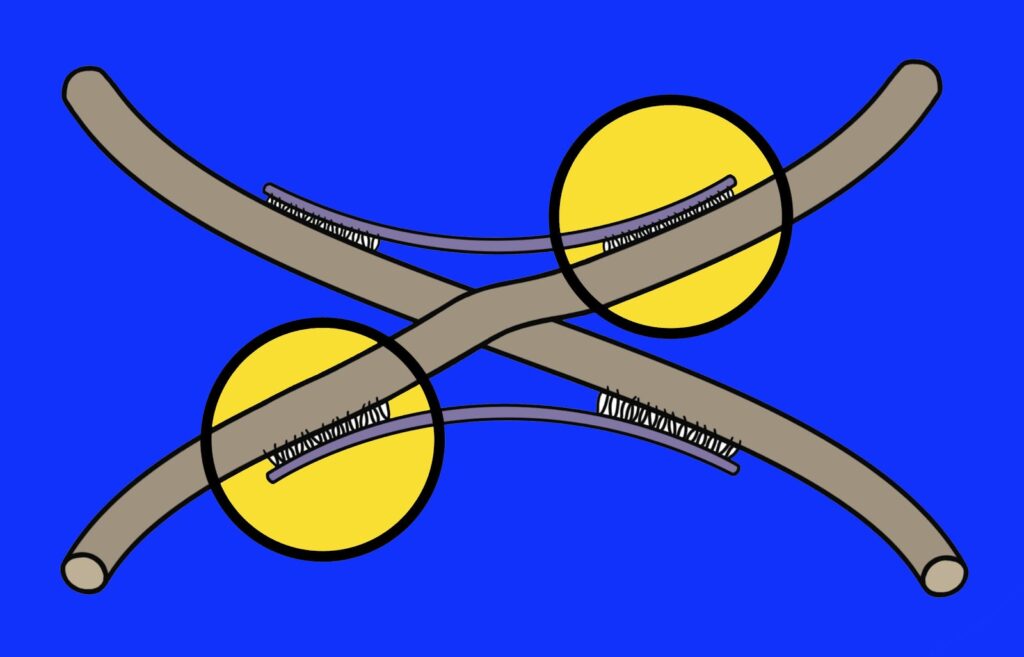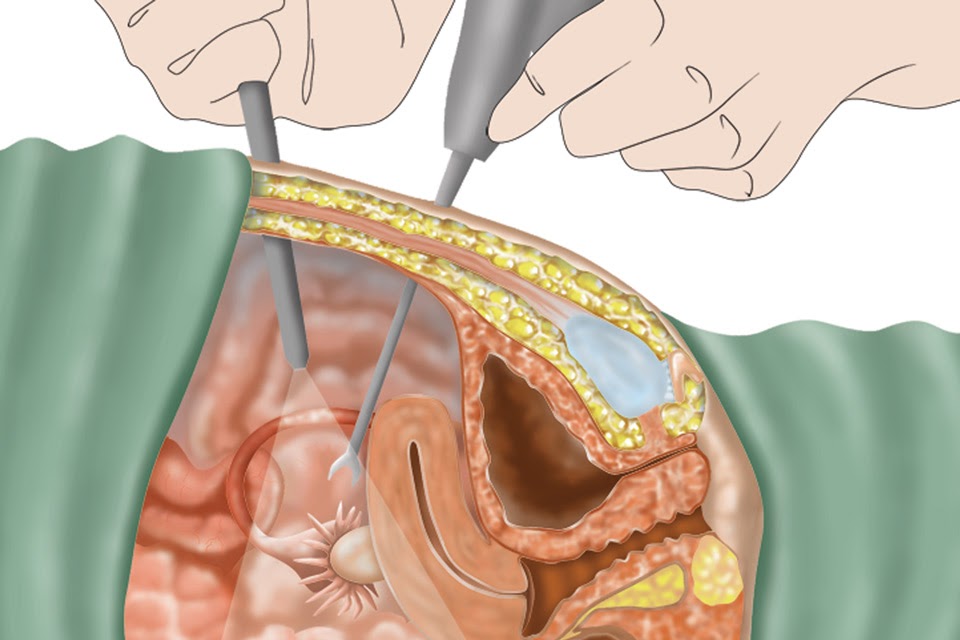We Treat Unexplained Infertility Naturally
The diagnosis of unexplained infertility is often due to adhesions – small yet powerful internal scars that do not appear in medical diagnostic tests. Clear Passage®️ is a world leader, with over three decades of experience treating adhesions and unexplained female infertility, as a complement to regular gynecologic care. Studies in peer-reviewed U.S. and international medical journals found that our manual physio/physical therapy improved fertility for most women.
Complete the online Request Consultation form to receive a free phone consultation with an expert therapist and learn more.
Causes and Frequency of Unexplained Infertility
Unexplained infertility (UI), also called “idiopathic infertility,” is one of the most frequent diagnoses in reproductive medicine. (Gleicher & Barad, 2006)
There is always a cause for infertility, so when diagnosis shows “no visible cause,” we turn to common “invisible” causes – those that often do not appear in x-rays, ultrasounds, MRI, or CT scans. Perhaps the most common of these invisible causes is adhesions.
The delicate female reproductive organs can lose function due to adhesive bonds. Adhesions are comprised of strong but small (sometimes microscopic) bands of collagen fibers. After surgery, injury, or inflammation such as endometriosis, adhesions form to start the healing process. Where they form, they create tiny but powerful bonds that can attach like glue to delicate pelvic and reproductive structures. At Clear Passage®️, we find adhesions to be a major problem in most of our patients diagnosed with unexplained infertility. Adhesions can cause infertility or pain as they constrict the reproductive organs in adhesive “straitjackets,” decreasing the chance of implantation or causing a miscarriage.
Adhesions that are located near the reproductive tract can impact fertility in numerous ways. Examples include:
- Adhesions on uterine walls and ligaments can cause uterine spasms or inflammation, preventing implantation or causing miscarriage.
- Adhesions within the tissues of the cervix can cause stenosis of the cervix, which causes the cervix to close (stenosis), stiffen (fibrosis), or spasm, thus impeding the passage of sperm into the uterus;
- Adhesions on the surface of the ovaries can prevent an egg from being released.
- Adhesions in or near the fallopian tube can restrict or prevent sperm and egg from meeting, preventing conception.
We encourage women with unexplained infertility to examine their personal and medical history for past healing events that may have caused pelvic adhesions. These include:
- Surgery (any surgery to the pelvis, abdomen, hip or back, etc.)
- Infection (e.g. vaginal, bladder, yeast, etc.)
- Inflammation (e.g., endometriosis, chlamydia, pelvic inflammatory disease (PID), etc.)
- Trauma (fall onto tailbone, back or hip, physical or sexual abuse, car accident, etc.)

Symptoms of Unexplained Infertility
Some symptoms that accompany unexplained infertility include:
- Negative finding for male factor infertility
- Inability to determine the hormonal cause of infertility
- Inability to diagnose mechanical failure of the reproductive tract
- Failure to conceive after 12 months of sexual activity without contraception
Treatments for Unexplained Infertility
Clear Passage®️ Treatment
After reviewing your history of healing events, we conduct a thorough evaluation of your entire body. We palpate for areas of tension or restricted mobility, with particular attention to areas of prior surgery, trauma, infection, or inflammation. We educate you and invite you to become a valued member of your treatment team. Then we begin therapy, using our hands to find, reduce and eliminate the adhesions, bond by bond to return your organs to previous mobility, increase functionality, and improve fertility. With over three decades of published results on the effectiveness of manually treating infertility by addressing adhesions, Clear Passage®️ Physical Therapy is seen as a ‘gold standard’ for natural infertility treatment.
No medical techniques have a 100% success rate. If we are unable to open your tubes, your chances for a successful IVF performed within 15 months after therapy increase by roughly 50%, per published studies. View our success rates.
Other Treatment Options (Surgery, Drugs)
Before the Clear Passage® Approach, lysis of adhesions was the only documented choice medical science offered for treating adhesions. This involves cutting or burning the adhesions under general anesthesia via laparoscopy or laparotomy (open surgery).
While lysis of adhesions can be effective, the surgery has some drawbacks:
- It carries risks associated with anesthesia or infection;
- Because adhesions can prevent the ability to see underlying structures, surgeons can mistakenly cut or burn unintended organs or other structures;
- The body tends to create more adhesions as it heals from the very surgery designed to remove them.
Post-surgical adhesions were the focus of a large, ten-year study. the Lancet, a leading medical journal, reported that 35% of all open abdominal or pelvic surgery patients were readmitted to the hospital more than twice to treat post-surgical adhesions, during the 10 years after their original surgery. (Ellis et al., 1999) Many follow-up surgeries (22%) occurred in the first year after surgery, and “readmissions continued steadily throughout the 10-year period” the study noted.
A large study published in Digestive Surgery showed that more than 90% of patients develop adhesions following open abdominal surgery and 55% to 100% of women develop adhesions following pelvic surgery. (Liakakos et al., 2001) Small bowel obstruction, infertility, chronic abdominal and pelvic pain, and difficult reoperative surgery are the most common consequences of abdominal and pelvic adhesions. Despite elaborate efforts to develop effective strategies to reduce or prevent adhesions, their formation remains a frequent occurrence after abdominal surgery. (Liakakos et al., 2001) Thus, many patients become trapped in a cycle of surgery-adhesions-surgery – with no end in sight. Clear Passage®️ ends this repeating cycle for most patients.
Published Research – Clear Passage®️
To view published results on the Clear Passage®️ Approach in treating infertility, please view our Infertility Success Rates Page.
Testimonials
To read patient success stories, please visit our Infertility Testimonial page.
Related Content:
Diet
Ectopic Pregnancy
Sexual Dysfunction
General Info
- Book Chapters: Overcome Infertility and Pain, Naturally
- How to Treat Infertility Naturally
- Everything about the Best Natural Infertility Treatments
- Fertility Treatment – The Natural Way
- Infertility Risk Factors
- What Causes Infertility in Women? (Infographic)
- [Infographic] Common Risk Factors for Infertility
- How Does Tubal Surgery Compare to Other Infertility Treatments?
- Published Pregnancy Rates With and Without Clear Passage®
- Budgets and Numbers and Bills, Oh My! – Paying for Infertility Treatment
- English Surrogacy
- Guide Through Infertility: From Diagnosis to Treatment
- Spirituality Can Help Women with Premature Ovarian Failure
- For Healthcare Providers: Women’s Health Issues and Female Infertility






